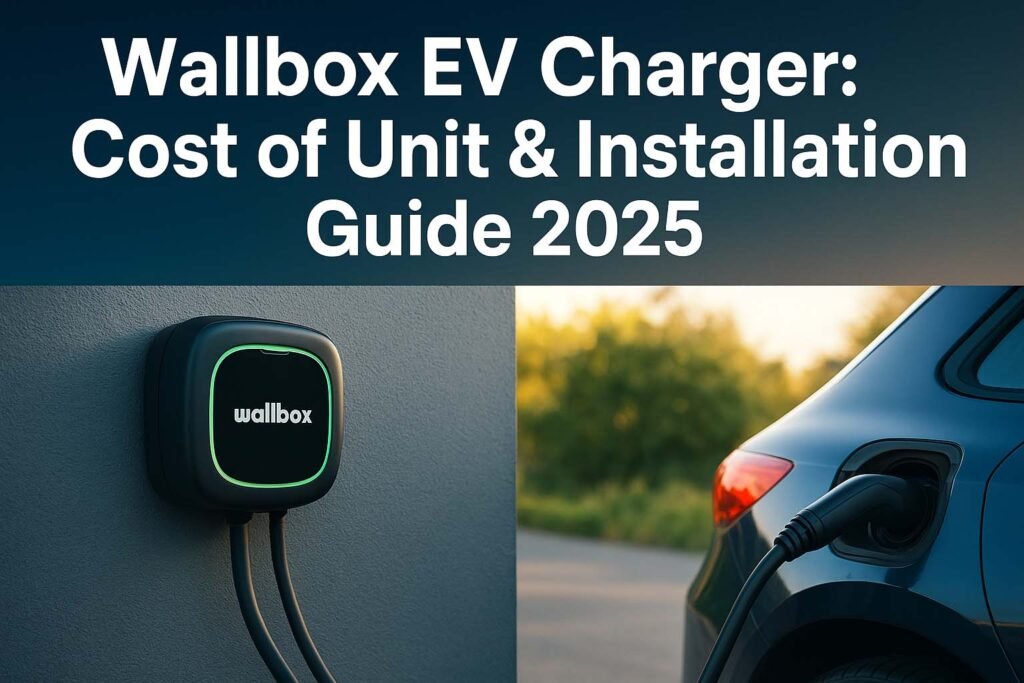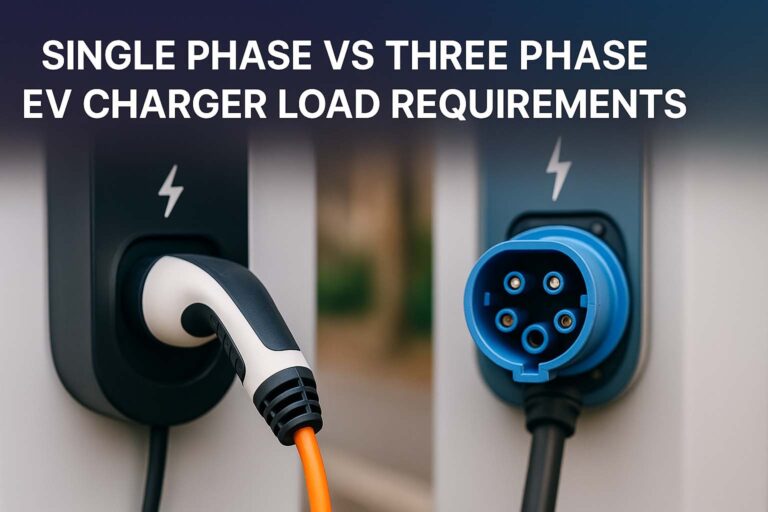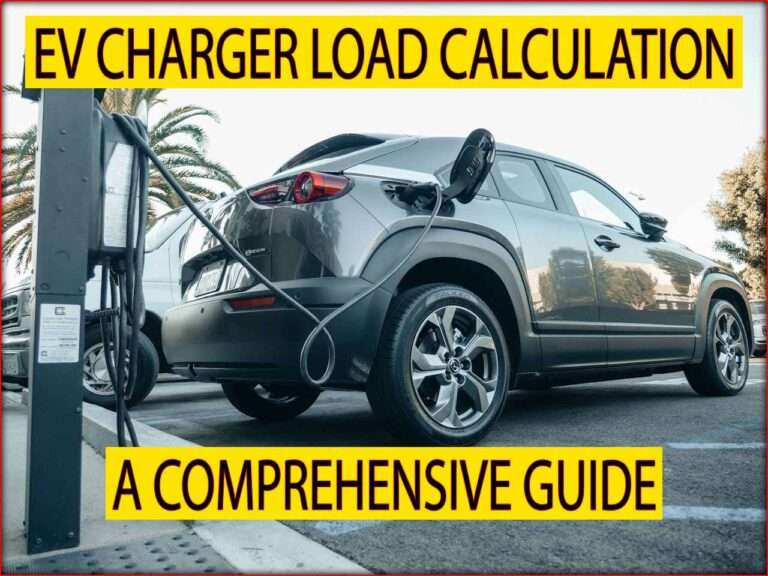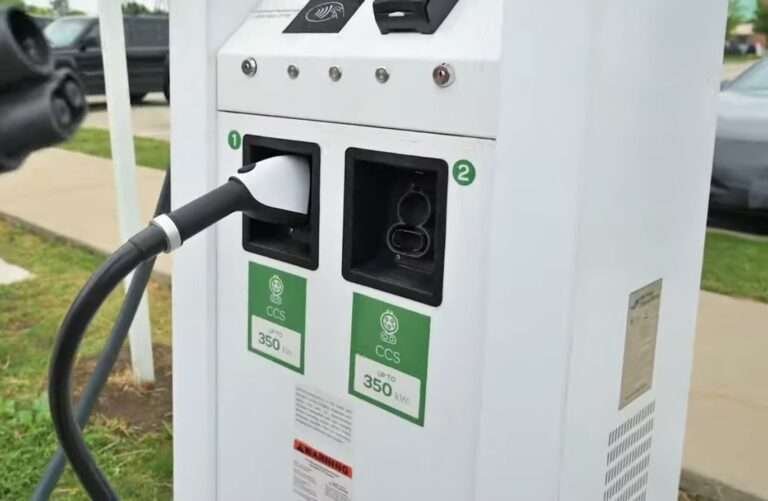Wallbox EV Charger: Cost of Unit & Installation Guide 2025
Electric vehicles are growing fast in popularity. Drivers want safe, fast, and efficient home charging solutions. One of the most reliable names in this space is the Wallbox EV Charger. It is designed to make home charging simple and effective, while giving flexibility for different vehicle types. Many homeowners in 2025 are asking not just about the price of the charger itself, but also the cost of installing it. A proper understanding of the Wallbox EV Charger will help in making an informed decision.
The EV market is expanding globally, and with that, home charging has become a top priority for convenience and cost savings. Public charging can be expensive and time-consuming, while a Wallbox EV Charger gives you the freedom to charge at home, overnight, at lower electricity rates. The upfront costs might feel high, but long-term benefits make it a worthwhile investment.
Table of Contents
Table of Contents

In this detailed guide, we will break down the unit cost, installation costs, influencing factors, and real-world examples. We will also compare Wallbox with other chargers so you know the value it brings. By the end, you’ll have clarity on how much you should budget in 2025 for a Wallbox EV Charger and its professional installation.
Key Takeaways
- The average cost of a Wallbox EV Charger in 2025 ranges between £550 and £1,200 ($650–$1,400) depending on model and features.
- Installation costs usually fall between £300 and £800 ($350–$1,000), influenced by wiring, location, and home setup.
- The total expense for unit plus installation typically ranges from £900 to £2,000 ($1,100–$2,400).
- Smart charging features, solar integration, and warranty coverage make Wallbox EV Chargers stand out.
- Government incentives and rebates can reduce the overall cost by up to 30%.
Know more about How Much Does a Public EV Charging Station Cost in 2025
Understanding the Wallbox EV Charger in 2025
A Wallbox EV Charger is a compact, wall-mounted home charging unit. It connects to your home’s electrical system and supplies power directly to your electric vehicle. Wallbox offers different models such as Pulsar Plus, Commander, and Copper SB, each with varying capacities, features, and smart controls.
In 2025 , these chargers are designed not only for speed but also for energy management. For example, Wallbox chargers allow integration with solar panels, energy storage, and even dynamic load balancing. This means the charger adapts to your home’s available electricity without overloading the system.
Unlike standard 3-pin plug charging, a Wallbox EV Charger provides faster charging speeds, ranging from 7.4kW to 22kW depending on model and electrical setup. This reduces charging times significantly, often fully charging an EV overnight.
Wallbox EV Charger: Cost of Unit in 2025
The cost of a Wallbox EV Charger depends on the model, features, and power rating. Below is a breakdown of typical unit costs in 2025.
| Wallbox Model | Power Rating | Features | Average Unit Cost (2025) |
|---|---|---|---|
| Wallbox Pulsar Plus | 7.4kW – 22kW | Compact, Wi-Fi, Bluetooth, smart app control | £550 – £800 ($650–$950) |
| Wallbox Copper SB | 7.4kW – 22kW | RFID access, solar integration, stylish design | £700 – £1,000 ($850–$1,200) |
| Wallbox Commander 2 | 7.4kW – 22kW | Touchscreen, multi-user management, Ethernet | £900 – £1,200 ($1,100–$1,400) |
The Pulsar Plus remains the most popular option for residential homes. It balances affordability, compact size, and smart features. For business or shared use, the Commander 2 offers advanced management and access control.
Know more about Tax Credit for Business EV Charger Installation: 2025 Incentives & How to Qualify
Wallbox EV Charger Installation Cost in 2025
Buying the unit is only part of the total expense. Professional installation is essential for safety, compliance, and efficiency. The cost depends on your electrical setup, the distance from your fuse box to the installation point, and whether upgrades are needed.
| Installation Scenario | Description | Estimated Cost (2025) |
|---|---|---|
| Standard Installation | Short cable run, modern fuse box, wall-mounted | £300 – £500 ($350–$600) |
| Complex Installation | Longer cable run, trenching, outdoor mounting | £500 – £800 ($600–$1,000) |
| Additional Upgrades | Fuse box upgrade, load management, solar integration | £200 – £500 ($250–$600) extra |
On average, most homeowners in 2025 spend £600–£1,200 ($750–$1,400) for installation when accounting for standard labor and minor upgrades.
Factors That Influence Wallbox EV Charger Cost
Several factors determine the final price you’ll pay:
Electrical Capacity of Your Home – If your home has limited supply, you may need an upgrade to handle a high-powered charger.
Location of Installation – Indoor installations near the fuse box are cheaper. Outdoor or detached garage setups often require more labor.
Smart Features – Integration with apps, Wi-Fi, and solar adds to unit cost but improves efficiency.
Local Regulations – In the UK, Part P compliance and RCD protection are required. In the US, NEC rules apply. Extra safety measures can raise cost.
Rebates and Incentives – Many regions offer EV charger grants or rebates. For example, the UK’s OZEV grant and US federal tax credits can lower upfront expense.
Know more about JuiceBox vs ChargePoint Home Flex: 2025 In-Depth Comparison
Total Cost of Wallbox EV Charger and Installation
When you combine the charger cost and installation, the total expense looks like this:
| Item | Average Cost Range (2025) |
|---|---|
| Wallbox Pulsar Plus + Install | £900 – £1,400 ($1,100–$1,700) |
| Wallbox Copper SB + Install | £1,100 – £1,600 ($1,300–$1,900) |
| Wallbox Commander 2 + Install | £1,400 – £2,000 ($1,700–$2,400) |
For most homeowners, budgeting around £1,200 ($1,450) ensures a quality Wallbox EV Charger and professional installation in 2025.
Why Choose a Wallbox EV Charger in 2025?
Wallbox has become a trusted global name because of its balance between design, performance, and intelligence. Here are some key advantages:
- Fast Charging: Reduces charging time compared to a standard plug.
- Smart Control: Mobile app lets you schedule charging, track energy use, and optimize costs.
- Solar Integration: Use excess solar power to charge your EV.
- Load Balancing: Prevents overloading your home’s electrical system.
- Durability: Weatherproof designs ensure reliable outdoor use.
Compared to many generic chargers, Wallbox stands out for its innovation in energy management.
Government Incentives and Rebates in 2025
Governments continue to encourage EV adoption with financial support. For Wallbox EV Charger buyers, these incentives can significantly reduce costs.
- UK: OZEV EV Chargepoint Grant covers up to 75% of installation cost (maximum £350).
- US: Federal tax credit covers 30% of unit + installation cost, up to $1,000.
- EU: Many countries offer local subsidies ranging from €300 to €900 per charger.
Always check with your local energy authority or installer for updated incentive programs.
Know more about Hardwired vs Plug In EV Charger: Which is Better for Your Home?
Comparison with Other EV Chargers
It helps to see how Wallbox compares with other popular chargers.
| Charger Brand | Power | Smart Features | Average Cost (Unit + Install) |
|---|---|---|---|
| Wallbox Pulsar Plus | 7.4–22kW | Wi-Fi, app, load balancing | £900–£1,400 |
| Tesla Wall Connector | 7.4–11kW | Tesla app integration | £800–£1,200 |
| Zappi Charger | 7.4–22kW | Solar optimization, eco mode | £1,000–£1,600 |
| EO Mini Pro | 7.2kW | Compact, smart features | £850–£1,300 |
Wallbox offers strong value with its mix of compact design, smart technology, and affordability compared to competitors.
Maintenance and Running Costs of Wallbox EV Charger
Once installed, a Wallbox EV Charger has very low running costs. Software updates are free, and most units carry a 3-year warranty. Occasional professional inspection ensures safety, especially if you expand your home’s electrical system. Unlike public charging, home charging is far cheaper per kWh, saving drivers hundreds annually.
Future Outlook for Wallbox EV Charger in 2025 and Beyond
Wallbox continues to innovate, moving towards bidirectional charging. This allows EV batteries to feed energy back into the home or grid, turning your car into a power storage system. Though still emerging, such features will shape the future of home charging.
Know more about Single Phase vs Three Phase EV Charger Load Calculator
Conclusion
The Wallbox EV Charger is one of the best investments EV owners can make in 2025. While the upfront cost may range between £900 and £2,000 ($1,100–$2,400) including installation, the convenience, long-term savings, and smart features make it highly worthwhile. With government incentives, the net cost can be even lower.
Home charging gives peace of mind, saves money, and maximizes the benefits of owning an electric vehicle. Whether you choose the Pulsar Plus for simple home charging or the Commander 2 for advanced management, Wallbox EV Chargers deliver reliability and future-ready technology.
Follow Us on Social:
Subscribe our Newsletter on Electrical Insights to get the latest updates in Electrical Engineering.
#WallboxEVCharger, #EVChargerCost, #EVChargingSolutions, #WallboxCharger, #EVChargerInstallation, #ElectricVehicleCharger, #HomeEVCharger, #WallboxCost2025, #EVChargingAtHome, #SmartEVCharging, #EVChargerGuide, #WallboxInstallation, #EVChargerSavings, #SustainableDriving, #EVCharger2025



![Best EV Chargers for Hotels & Guest Accommodations [Commercial Grade] 4 Best EV Chargers for Hotels & Guest Accommodations [Commercial Grade]](https://azadtechhub.com/wp-content/uploads/2025/10/Best-EV-Chargers-for-Hotels-Guest-Accommodations-Commercial-Grade-768x512.jpg)


